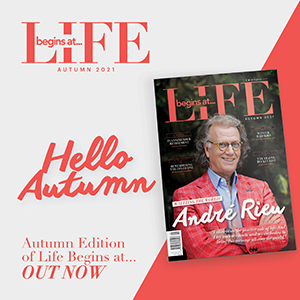[hr]Most pets just love their food and meal times are often the highlight of their day. Pet owners often worry, however, about their pet’s fussiness or, alternatively, their over-eating habits. Here are some tips and suggestions on feeding your pets[hr]
Feed the best pet food
A good diet will keep your pet healthy and active throughout life. Feeding the correct diet for your pet’s stage in life – puppy/kitten, adult or senior and keeping to the portion size recommended on the food packaging will ensure your pet has the best possible nutrition. While some diets eg. super premium ones, may seem more expensive, they have been formulated by nutritionists and, generally, you feed less of them. There is, however, a pet food that suits every budget.
If you do make your own food, ensure you provide the correct balance of nutrients. For instance, pets need a higher level of protein than humans and specific amino acids may be required eg. cats need taurine for their sight and dogs tryptophan for calm behaviour.
Variety – the optional spice of life
Many pets are happy eating the same food each and every meal time, while others, especially cats, look for variety. Some owners also feel better if they can offer their pets a mix of flavours or textures. This can be achieved by feeding a mix of dry biscuits and canned food or by offering treats, which can make useful occupiers and some treats even offer teeth-cleaning or fresh breath opportunities. As long as the food you feed is suitable for your pet, variety is at the discretion of the owner.
Not too much of a good thing
Many pets have a tendency to overeat and, just like humans, there are a significant number of overweight pets nowadays. As their guardians, it is up to us, the pet owner, to control the types and portions of food offered. Easier said than done when that pleading face is watching your every mouthful!
Weigh your pet regularly and check that you can still see a waistline! If you pet is a little on the portly side, you can:
• Reduce the amount of food you feed
• Switch to a weight management diet
• Increase the amount of exercise and activity your pet engages in
• If you offer lots of treats, you will need to cut back on your pet’s mealtime portions.
Food service
 You cat may make you feel like you are an eternal waiter, while your dog may always appear to be starving! When you feed your pet is up to you. Dogs can survive being fed once a day but would probably prefer a couple of meal opportunities. Cats like to graze so will return to their food bowls often. If your pet wolfs down their food, try elevating their food dish to slow them down or use one specifically designed to make them have to work at obtaining food eg. Pet Life Buster Food Maze.
You cat may make you feel like you are an eternal waiter, while your dog may always appear to be starving! When you feed your pet is up to you. Dogs can survive being fed once a day but would probably prefer a couple of meal opportunities. Cats like to graze so will return to their food bowls often. If your pet wolfs down their food, try elevating their food dish to slow them down or use one specifically designed to make them have to work at obtaining food eg. Pet Life Buster Food Maze.
Once you have worked out your pet’s correct daily rations, you can deliver this any way you wish. A food bowl is convenient but a food releasing toy, such as a treat ball, can help occupy your pet for much longer. Satisfying the hunt for food can often prevent problems such as raiding garbage bins.
Fussy eaters
If your pet has become fussy with their food, check their teeth and gums, as a sore mouth may make eating impossible. Also have a vet check to ensure all is good with your pet’s weight, health and nutrition.
You can encourage pets to eat by warming their food a little (pet food should be served at room temperature). With dry food, add a few drops of warm water as this helps soften the kibble and releases the tasty aromas, making it more palatable to your pet.
Cats sometimes benefit from being fed in a flat bowl or saucer. High sided pet food dishes often brush their sensitive whiskers as they eat, making it an unpleasant experience.
Water, water everywhere
No matter what you feed, you should always provide plenty of fresh water for your pet to drink. More than one bowl is best, in case one gets knocked over. On hot days, you can even offer your dog a canine ice block as a treat!
Some pets are fussy with water and prefer it from either a running source or a stagnant pool, rather than straight from a tap. This may be due to the taste of chemicals in our plumbed water supply. You can provide filtered water or refrigerate the water for a day or two, if you wish, to make it more acceptable for your pet.
Make food fun
Since our pets love food so much, we can use this to our advantage. Food can be a very effective reward for teaching desired behaviours. A tasty morsel of their favourite food may be all it takes to teach a dog to sit or to come when called. Your cat can also be taught tricks such as offering a paw.
When you leave your pet alone, in addition to food-releasing toys, we can also simply scatter kibble around the backyard or kitchen. There will rarely be a biscuit left on your return!
Feeding checklist
1. Are you feeding the correct diet for your pet’s age and stage of life?
2. Do you know the correct portion size for your pet?
3. Is your pet thriving on their diet, or merely surviving? Change diet if necessary.
4. Are you using food to enhance your pet’s life? If not, give it a go.
About Dr Jo
 Dr Jo Righetti is an animal behaviourist with a background in zoology, a PhD in animal behaviour and 15 years business experience helping people and pets. Dr is also an ambassador for Assistance Dogs Australia and Animal Welfare League Australia and also has a popular website Pet Problems Solved with Dr Jo at petproblemsolved.com.au. She regularly features on radio, television and at events.
Dr Jo Righetti is an animal behaviourist with a background in zoology, a PhD in animal behaviour and 15 years business experience helping people and pets. Dr is also an ambassador for Assistance Dogs Australia and Animal Welfare League Australia and also has a popular website Pet Problems Solved with Dr Jo at petproblemsolved.com.au. She regularly features on radio, television and at events.






















Add Comment